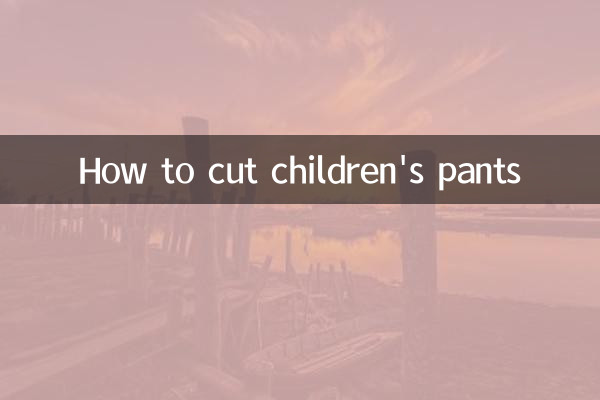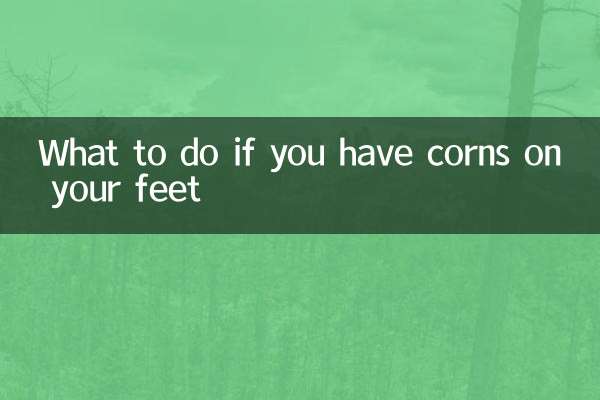How to cut children's pants
In the past 10 days, the popularity of children's clothing DIY has continued to rise across the Internet. In particular, children's pants cutting tutorials have become the focus of attention among mothers and craft enthusiasts. This article will combine hot topics and structured data to provide you with a detailed analysis of the cutting methods of children's pants.
1. Recently popular children’s clothing DIY topics

| Ranking | hot topics | Search volume (10,000) | platform |
|---|---|---|---|
| 1 | Children's pants cutting diagram | 28.5 | little red book |
| 2 | Children's pants repurposed from old clothes | 19.2 | Tik Tok |
| 3 | Baby jumpsuit cutting | 15.7 | Station B |
| 4 | Children's Jeans DIY | 12.3 | Zhihu |
| 5 | Children's sports pants production | 9.8 | quick worker |
2. Basic data on children’s pants cutting
| age | Pants length(cm) | Hip circumference (cm) | Waist (cm) | Pants leg width (cm) |
|---|---|---|---|---|
| 1-2 years old | 35-40 | 48-52 | 44-48 | 12-14 |
| 3-4 years old | 45-50 | 54-58 | 50-54 | 14-16 |
| 5-6 years old | 55-60 | 60-64 | 56-60 | 16-18 |
| 7-8 years old | 65-70 | 66-70 | 62-66 | 18-20 |
3. Detailed explanation of the steps for cutting children’s pants
1. Prepare tools and materials
What you need to prepare: scissors, ruler, marker, fabric (cotton recommended), elastic band, sewing machine (optional). Choose the appropriate thickness of fabric according to the season. Thin cotton fabrics can be selected in summer and velvet fabrics can be selected in winter.
2. Measure dimensions
Accurately measure your child's waist, hip, pants length and leg circumference data. It is recommended to measure when the child is standing and leave 2-3cm of space for movement. Pay special attention to the length of the crotch part to avoid being too tight and affecting activities.
3. Draw a cropped image
Draw the pants pieces on the paper according to the following proportions: the front piece takes up 1/4 of the hip circumference plus 1cm, and the back piece takes up 1/4 of the hip circumference plus 3cm. The length of the trousers is measured from the waistline to the ankle, and the width of the trouser legs is adjusted according to the style. The crotch depth is generally 1/4 of the hip circumference.
4. Fabric cutting
Fix the drawn paper pattern on the fabric and trace it with chalk. Note when cutting: cut 2 pieces each for the front and back pieces, and leave a 1-1.5cm seam allowance on the edge of the fabric. For twill fabrics, pay attention to the direction of the grain to ensure the drape of the pants.
5. Suturing steps
Sew the inner seam of the front and back pieces first, then sew the outer seam. The crotch needs to be reinforced and stitched, and it is recommended to sew 3 lines back and forth. Waist treatment: sew the passage for the elastic band first, then insert the elastic band. The trouser legs can be cuffed or hemmed according to preference.
4. Key points for tailoring popular styles
| shape | Features | Key points of tailoring | age appropriate |
|---|---|---|---|
| sweatpants | Loose and comfortable | Threaded hems and double-layered waist | 3-12 years old |
| jeans | Crisp and stylish | Pockets on the front and patch pockets on the back | 5 years and above |
| casual pants | Simple and elegant | Elasticized waist, side slip pockets | 1-8 years old |
| Jumpsuit | Convenient and practical | Adjustable shoulder straps, crotch snap button | 0-3 years old |
5. Frequently Asked Questions
Q: How to make pants last longer?
A: You can add lining fabric to areas prone to wear such as knees and buttocks; choose high-density cotton; and reinforce sutures in stress-bearing areas such as the crotch and trouser legs.
Q: What should I do if I don’t have a sewing machine?
A: It can be sewn by hand, and the stitches should be fine and smooth; key parts such as the crotch can be fixed with beading needles first; choose fabric with better elasticity to reduce the difficulty of sewing.
Q: How to adjust pants size?
A: A longer elastic band can be reserved at the waist for adjustment; the trouser legs are cuffed so they can be released as they grow; 1-2cm can be reserved for side seams.
Through the above detailed cutting instructions and data reference, I believe you have mastered the essentials of making children's pants. Why not give it a try and make a unique pair of love pants for your child?

check the details

check the details